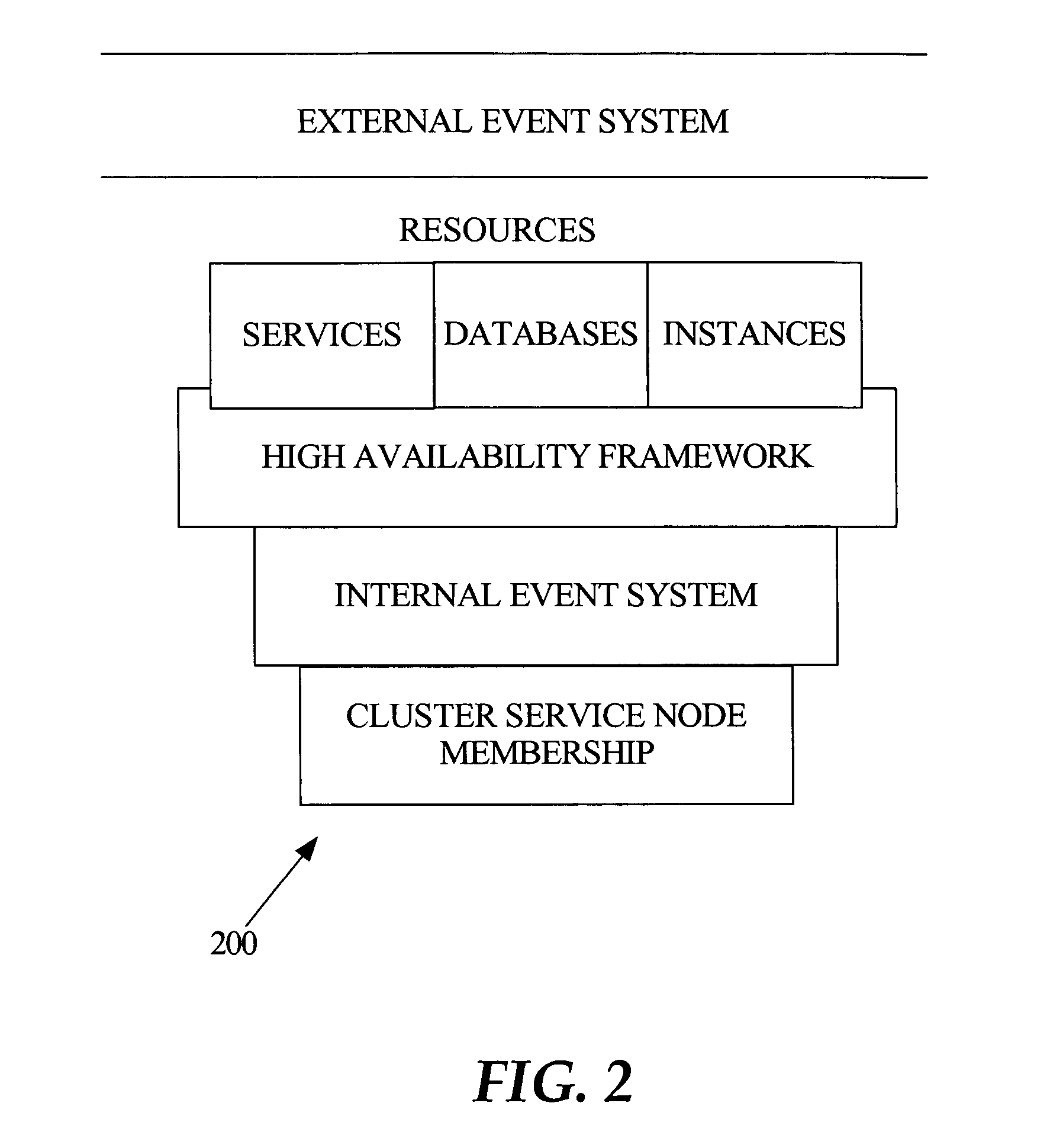Fast application notification in a clustered computing system
a computing system and application notification technology, applied in the field of clustered computing systems, can solve the problems of application waste of significant amount of time and resources in their interaction, application waste of time and resources, and high availability
- Summary
- Abstract
- Description
- Claims
- Application Information
AI Technical Summary
Problems solved by technology
Method used
Image
Examples
Embodiment Construction
[0025] Functional Overview of Embodiments
[0026] Techniques for fast notification of changes to a clustered computing system are described, in which a number of events are published for system state changes, for enabling fast application recovery and fast rebalancing of sessions with the clustered system. One example of such a clustered computing system is a database cluster comprising multiple instances of a database server executing on multiple node machines, configured to access and manipulate shared data from a database in response to requests from multiple client applications.
[0027] When a resource associated with a service experiences a change in status, a notification event is immediately published for use by various subscribers to the event. For example, a notification event is issued whenever a service becomes available on an instance and whenever a service becomes unavailable on an instance. The notification events occur for status changes for services and for the resourc...
PUM
 Login to View More
Login to View More Abstract
Description
Claims
Application Information
 Login to View More
Login to View More - R&D
- Intellectual Property
- Life Sciences
- Materials
- Tech Scout
- Unparalleled Data Quality
- Higher Quality Content
- 60% Fewer Hallucinations
Browse by: Latest US Patents, China's latest patents, Technical Efficacy Thesaurus, Application Domain, Technology Topic, Popular Technical Reports.
© 2025 PatSnap. All rights reserved.Legal|Privacy policy|Modern Slavery Act Transparency Statement|Sitemap|About US| Contact US: help@patsnap.com



